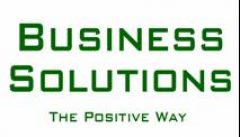Normalization of Deviance: How to Lose Your Business
Failure is insidious even for the smartest and brightest entrepreneurs. It sneaks up wearing a cloak of invisibility woven from the gradual acceptance of what used to be unacceptable. That is the normalization of deviance. Here are seven examples from society and business. It has never been easier to destroy your business so why wait? Here are seven easy steps and one bonus suggestion.
- Remove performance standards & Incentivize lassitude. Yes, it has been difficult with over two years of government lockdowns. A virtual workforce based at home has been a winner for some businesses but others are suffering from employees who have essentially retired on the job with quiet quitting. Every low performer you tolerate sets a new low standard for everyone to emulate. Each now low becomes the benchmark to follow; straight to failure. Poor performers can drag down ten peers. A non-performing employee will change your business culture whether you like it or not.
Suggestions: Measure performance and clean house. Eliminate mediocrity as quickly as possible. It is sometimes easier to change people than it is to change people. Reconfigure your staff. Hire slow and fire fast. Adjust your people, process, equipment, product and/or hours to handle vacancies. Consider hiring older people or others you might not have included in the past. They just might surprise you with their work ethic and knowledge. - Spend, spend; spend like there is no tomorrow. Cash is fuel for every business. You are out of business when you run out of cash. Now is the time to be careful with your cash and your debt. The business may be past saving if you get to the point where those online offers for easy loans look attractive. Easy money can quickly become a bottomless pit of interest and fees.
Suggestions: Listen to the pessimists in your organization and the market to help you to understand the risk environment and pivot your spending. Listening does not mandate agreement but it will give you new information for better decisions. Listen to what the sales data is telling you to see how your customers are adjusting to this troubled economy. - Deny the facts in favor of the loudest voices. Be an informed consumer of the news. There are highly skilled propagandists out there with big megaphones. Repeating a lie does not make it true. Changing definitions does not change the facts. Listen to both sides with an open mind. Make considered judgments. Be careful of listening to only your own voice.
Suggestions: It helps to talk to trusted advisors and mentors. Be deliberate about checking your position and pivoting if needed. Run SWOT and PEST analyses as tools to help visualize the situation. - Risk it all. Just do it. Business has always been risky. Smart entrepreneurs analyze and manage risk.
Suggestions: Redo your market research and understand your business economics. Develop options and test the riskiest elements of your plan before you bet the ranch on them. - Deny that the rule of law is fundamental to life, families and civilization. It is a fact that civilization and freedom do not exist when the criminals rule the streets. Businesses cannot exist in chaos. Do you really want to live where those in power want to defund civilization?
Suggestions: Talk to the people in power and vote wisely and with your feet if necessary. Consider if it is time to move to a safer location. - Ignore inflation. The truth is that inflation is a killer. It wipes out businesses, jobs and bankrupts families. It destroys dreams and drives people to the bread lines. You are seeing the impact now at home and in your business. Know that this impact will not go away!
Suggestions: Raise your prices faster than your costs. Fire unprofitable products and customers. Apply the principles of profit improvement and look at every aspect of your business. - Cook your books like Enron and Congress. Clever bookkeeping can hide a lot of sins. Resist the temptation to keep massaging your business plans and forecasts until you get the numbers that you want. Reality wins.
Suggestions: Start with a blank piece of paper to create a new business plan. - BONUS: Deny that the American Constitutional Federal Republic and Capitalism work for society by creating jobs that raise us all up. Your job and your business depend on this as the very foundation of freedom.
Suggestions: Celebrate this great nation and work every day to make America great. Save your business and the jobs of the people who depend on you to continue to do the right things for the greater good.
Thank you to the work that you are doing to create and sustain jobs; even your own.
References:
JK Pinto – International journal of project management, 2014 – Elsevier
J Albright – Business & commercial aviation, 2017 – code7700.com
https://code7700.com/pdfs/bca/bca_normalization_of_deviance_2017-01.pdf
MG Everson, BA Wilbanks, RR Boust – AANA journal, 2020 – researchgate.net
K Davis, JK Pinto – IEEE Transactions on Engineering …, 2022 – ieeexplore.ieee.org
S SCOTT – 2021 – starlingtrust.com
https://starlingtrust.com/couch/uploads/file/the-normalization-of-deviance-starling.pdf
